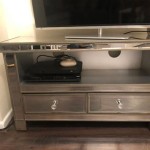How To Mirror Your MacBook Air to a Samsung TV
Mirroring a MacBook Air screen to a Samsung TV allows for a larger viewing experience, ideal for presentations, streaming media, or simply sharing content with others. This article provides a comprehensive guide on various methods to achieve successful screen mirroring, addressing compatibility, troubleshooting, and optimizing the connection for the best possible outcome.
Before initiating the mirroring process, ensure both the MacBook Air and the Samsung TV are connected to the same Wi-Fi network. This is a fundamental requirement for most wireless mirroring methods. Additionally, update both devices to their latest respective operating systems and software versions. Doing so often resolves compatibility issues and ensures optimal performance.
Several methods are available for mirroring a MacBook Air to a Samsung TV. These methods range from built-in features to third-party applications and hardware solutions, each with its own advantages and disadvantages. It is crucial to understand each approach to select the most suitable option based on individual needs and technical capabilities.
Using AirPlay 2 for Direct Screen Mirroring
AirPlay 2 is Apple's proprietary wireless streaming technology, designed for seamless integration between Apple devices and compatible displays. Many modern Samsung TVs support AirPlay 2 directly, simplifying the mirroring process. To determine if a Samsung TV supports AirPlay 2, consult the TV's specifications or user manual. Generally, Samsung TVs manufactured from 2018 onwards are likely to have AirPlay 2 functionality.
To initiate AirPlay 2 mirroring, first ensure that both the MacBook Air and the Samsung TV are powered on and connected to the same Wi-Fi network. On the MacBook Air, open the System Preferences application. Navigate to the "Displays" preference pane. If the Samsung TV is detected, it will appear in the list of available displays. Click on the TV's name to initiate the connection.
Alternatively, click on the AirPlay icon in the menu bar at the top of the screen. This icon resembles a rectangle with a triangle pointing upwards. A list of available AirPlay devices will appear. Select the Samsung TV from the list. A passcode may appear on the TV screen. Enter this passcode on the MacBook Air to complete the connection. Once the connection is established, the MacBook Air screen will be mirrored on the Samsung TV.
AirPlay 2 allows for adjustments to the mirroring experience. Within the Displays preference pane on the MacBook Air, options are available to adjust the resolution and scaling of the mirrored display. The "Optimize for" setting enables selecting between optimizing for the MacBook Air's built-in display or the Samsung TV. Selecting the latter typically provides a sharper image on the TV. Furthermore, options exist for arranging the displays, such as positioning the Samsung TV to the left or right of the MacBook Air's display, affecting cursor movement between the screens.
To stop AirPlay 2 mirroring, click the AirPlay icon in the menu bar and select "Turn AirPlay Off" or disconnect from the Samsung TV listed there. Alternatively, navigate to the Displays preference pane and disconnect there.
Troubleshooting AirPlay 2 connectivity involves several steps. First, verify that both devices are on the same Wi-Fi network and that the network is functioning correctly. Restarting both the MacBook Air and the Samsung TV can often resolve temporary connectivity issues. Ensure that AirPlay is enabled in the Samsung TV's settings. This is typically found within the TV's general settings or network settings. Check for any firmware updates for the Samsung TV, as updates often include improvements to AirPlay compatibility and performance.
Firewalls or security software on the MacBook Air can sometimes interfere with AirPlay. Temporarily disabling these features can help determine if they are the source of the problem. Additionally, ensure that the AirPlay Receiver setting on the MacBook Air is enabled. This can be found within the Sharing preference pane in System Preferences.
Utilizing Third-Party Screen Mirroring Applications
In scenarios where the Samsung TV does not support AirPlay 2 natively, or if encountering persistent issues with AirPlay, third-party screen mirroring applications offer an alternative solution. Several applications are available for macOS that facilitate screen mirroring to various smart TVs, including Samsung TVs. These applications typically use a different wireless protocol, such as Miracast or proprietary protocols, to establish the connection.
Popular screen mirroring applications for macOS include AirBeamTV, Reflector, and LetsView. Each application has its own features, pricing, and compatibility requirements. Before purchasing or subscribing to an application, it is advisable to download and test the trial version to ensure compatibility with both the MacBook Air and the Samsung TV.
The installation and configuration process for third-party screen mirroring applications generally follows a similar pattern. First, download and install the application on the MacBook Air. Launch the application and follow the on-screen instructions to configure the connection. These instructions typically involve selecting the Samsung TV from a list of available devices. Some applications may require installing a companion application on the Samsung TV, which can be found in the TV's app store.
Once the connection is established, the MacBook Air screen will be mirrored to the Samsung TV. Most applications offer options to adjust the resolution, scaling, and quality of the mirrored display. These settings can be accessed through the application's settings menu. Experimenting with these settings can help optimize the mirroring experience based on the network conditions and the capabilities of the Samsung TV.
Troubleshooting third-party screen mirroring applications involves similar steps to troubleshooting AirPlay. Verify that both devices are on the same Wi-Fi network, restart both devices, and check for updates for both the mirroring application and the Samsung TV. If the application requires a companion application on the TV, ensure that it is installed and up-to-date. Consult the application's documentation or support resources for specific troubleshooting steps.
Employing an HDMI Cable for a Wired Connection
While wireless screen mirroring offers convenience, a wired connection via an HDMI cable provides a more reliable and stable connection, especially for demanding applications such as gaming or video editing. This method eliminates potential interference from Wi-Fi networks and ensures a consistent signal.
To connect a MacBook Air to a Samsung TV using an HDMI cable, first identify the appropriate ports on both devices. The MacBook Air typically has a Thunderbolt/USB-C port, while the Samsung TV will have multiple HDMI ports. An adapter may be required to convert the MacBook Air's Thunderbolt/USB-C output to HDMI. Numerous adapters are available, ensuring compatibility with the specific MacBook Air model.
Connect the HDMI cable to the adapter (if needed) and then connect the adapter to the MacBook Air's Thunderbolt/USB-C port. Connect the other end of the HDMI cable to an available HDMI port on the Samsung TV. Power on both devices. On the Samsung TV, select the correct HDMI input source corresponding to the port to which the MacBook Air is connected. This is typically done using the TV's remote control.
Once the correct HDMI input is selected, the MacBook Air screen should appear on the Samsung TV. The Displays preference pane on the MacBook Air will automatically detect the connected display. Options are available to adjust the resolution, scaling, and arrangement of the displays, similar to AirPlay. The "Arrangement" tab allows designating the Samsung TV as the primary or secondary display. Selecting the "Mirror Displays" checkbox will mirror the MacBook Air screen onto the TV. Deselecting this option extends the desktop, allowing the Samsung TV to function as a separate display.
Troubleshooting HDMI connectivity involves ensuring that the HDMI cable is securely connected to both devices. Try using a different HDMI cable to rule out a faulty cable. Verify that the correct HDMI input source is selected on the Samsung TV. Restarting both the MacBook Air and the Samsung TV can sometimes resolve connectivity issues. If using an adapter, ensure that it is compatible with the MacBook Air and the Samsung TV.
Consider the limitations of each mirroring method. AirPlay 2 offers convenience but may be subject to Wi-Fi interference. Third-party applications can provide wider compatibility but may introduce latency or require subscriptions. An HDMI cable provides the most stable connection but restricts mobility. The optimal choice depends on the specific use case and available resources.
Regardless of the chosen method, regular maintenance of both the MacBook Air and the Samsung TV is essential for optimal performance. Keep the operating systems and software up-to-date, and periodically check for firmware updates. By understanding the nuances of each mirroring method and proactively addressing potential issues, a seamless and enjoyable screen mirroring experience can be achieved.

How To Screen Mirror Mac Samsung Tv Step By Guide

6 Ways How To Mirror Your Macbook Samsung Tv

How To Mirror Macbook Samsung Smart Tv

14 Fixes For Screen Mirroring Mac To Samsung Tv Not Working Techwiser

How To Mirror Macbook Samsung Smart Tv Screen Wirelessly

How To Screen Mirror Mac Samsung Tv Step By Guide

How To Connect Your Macbook Samsung Tv In Diffe Ways

How To Screen Mirror Mac Samsung Tv Step By Guide

How To Mirror A Mac Tv Osxdaily

How To Mirror A Mac Smart Tv








